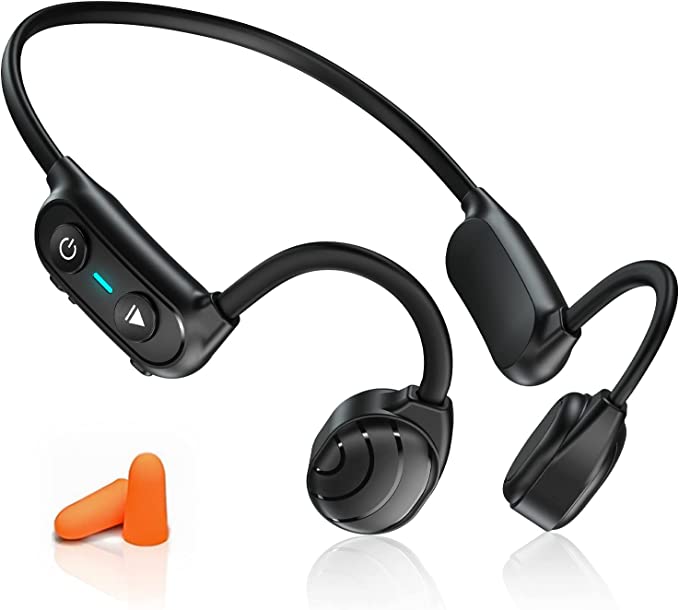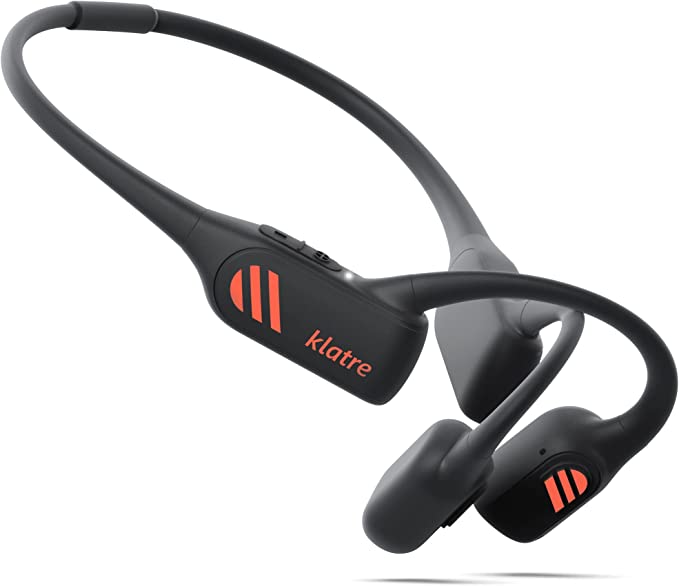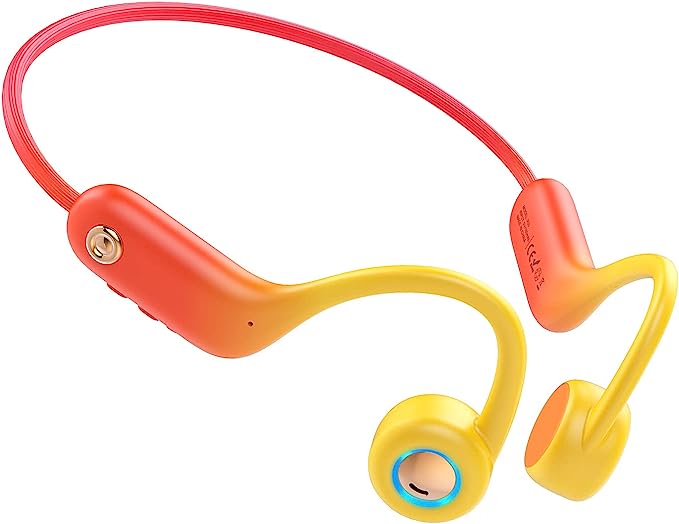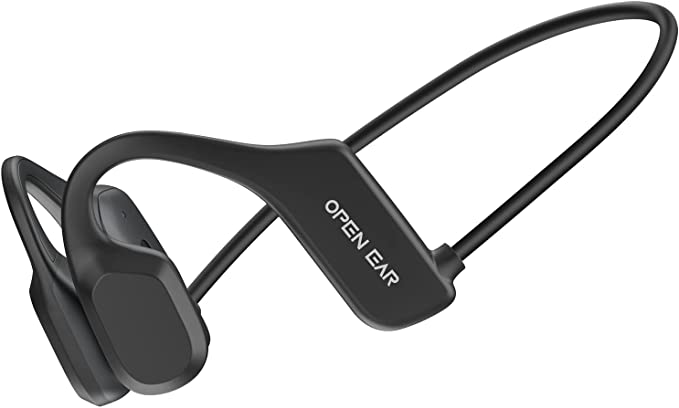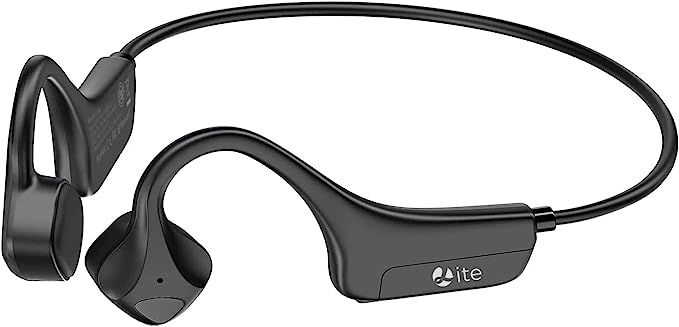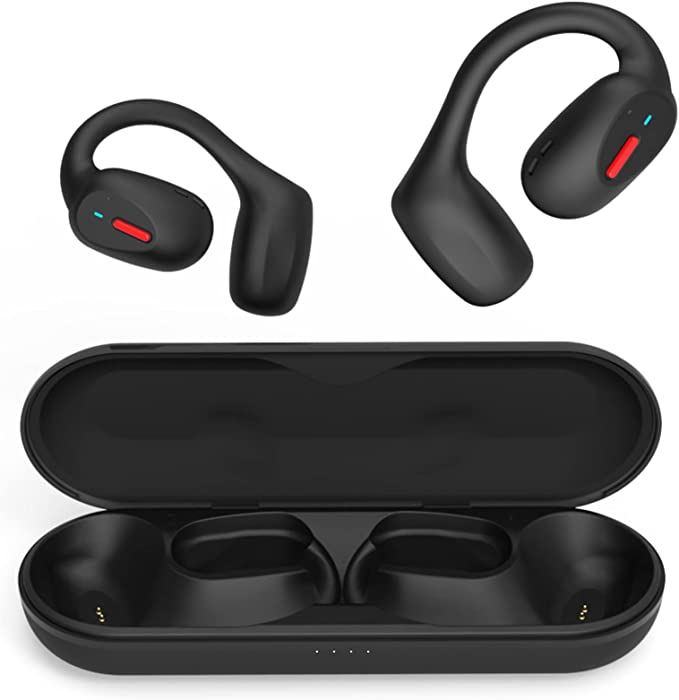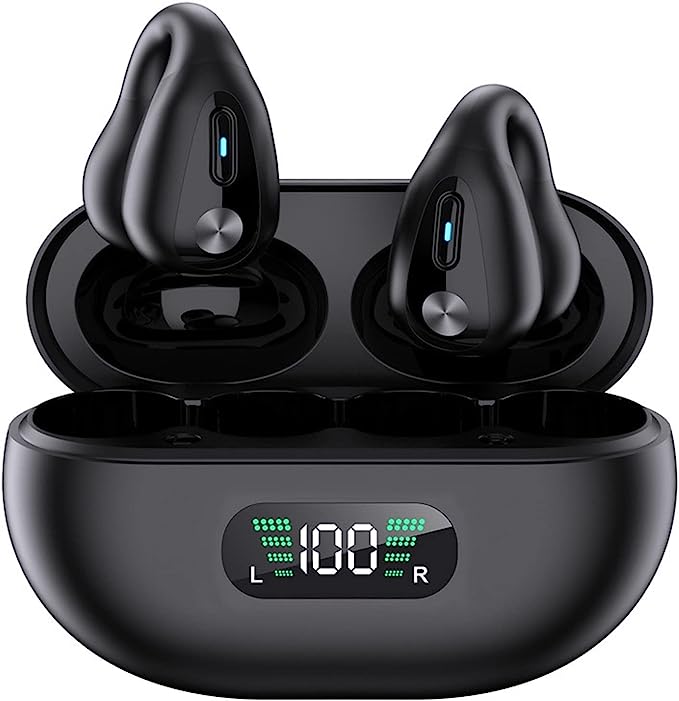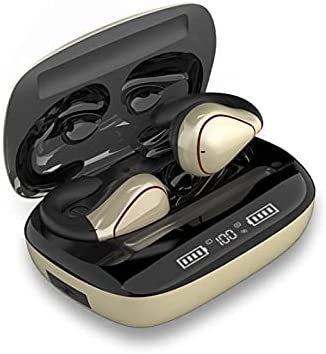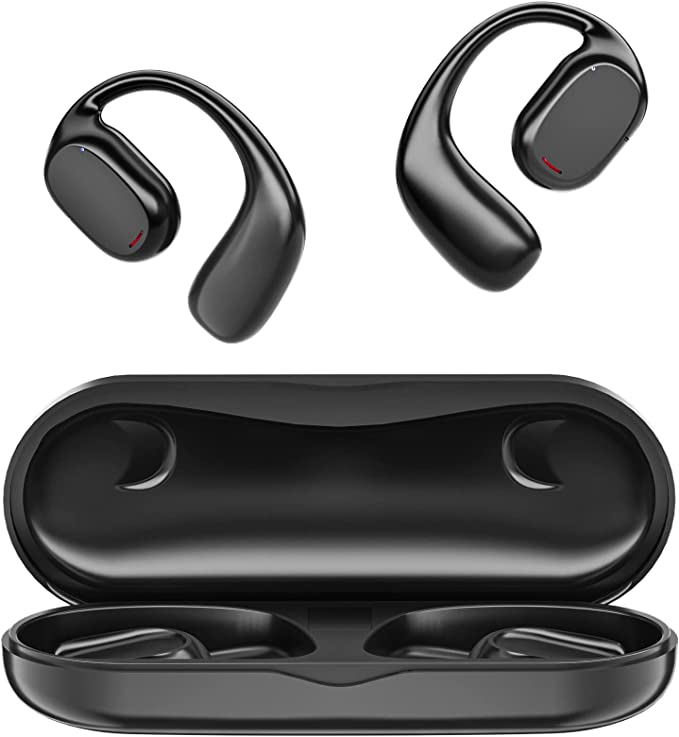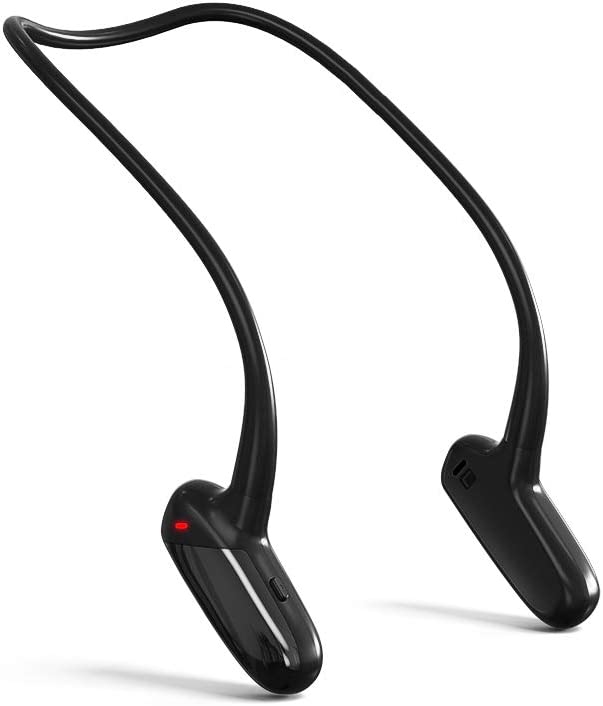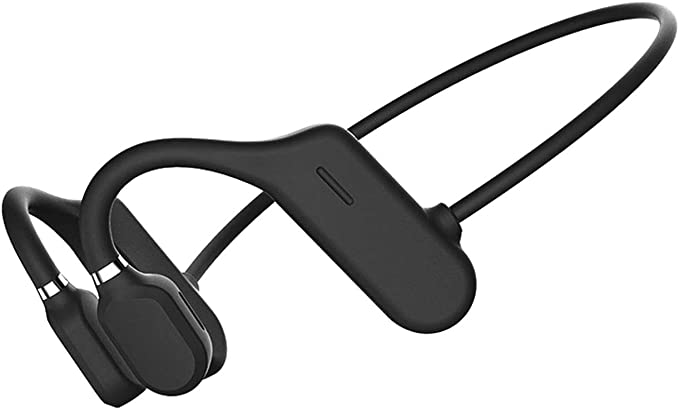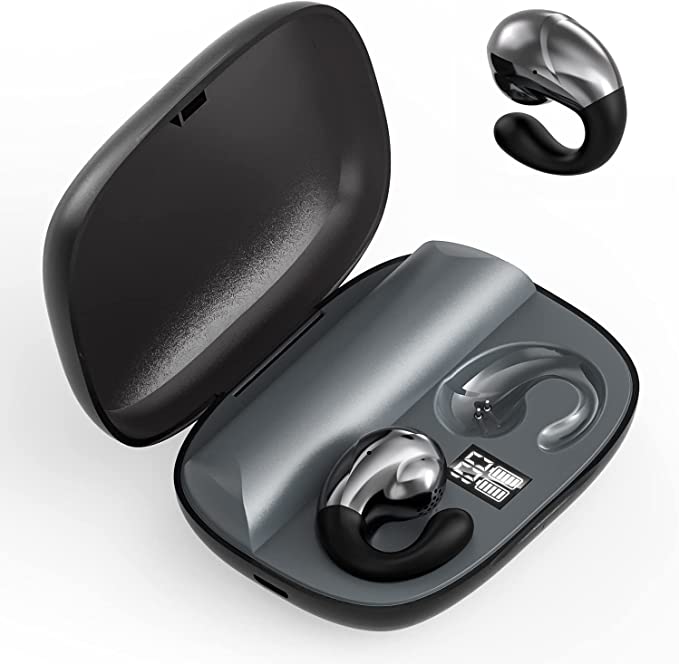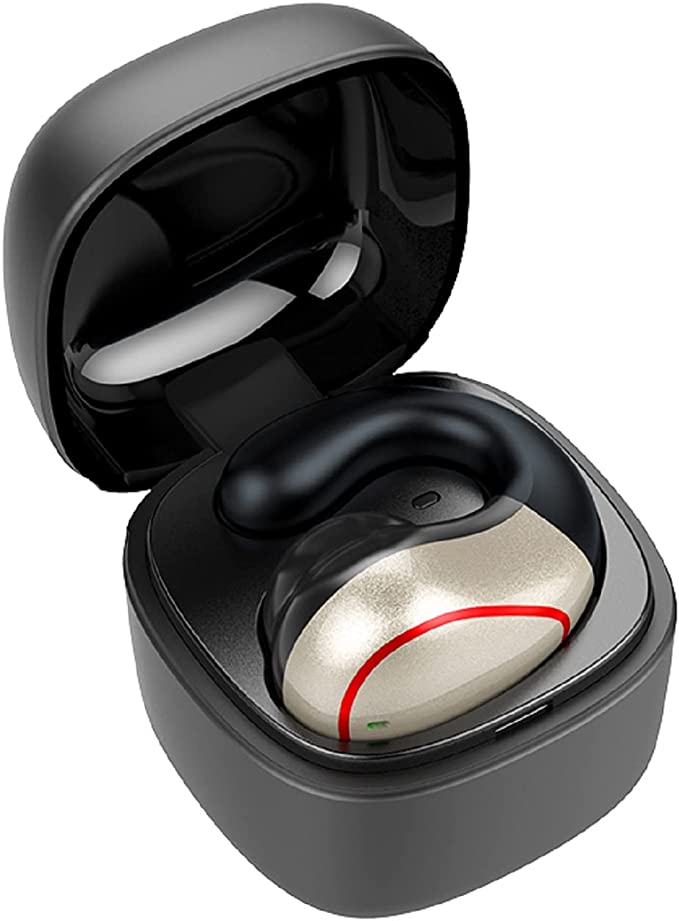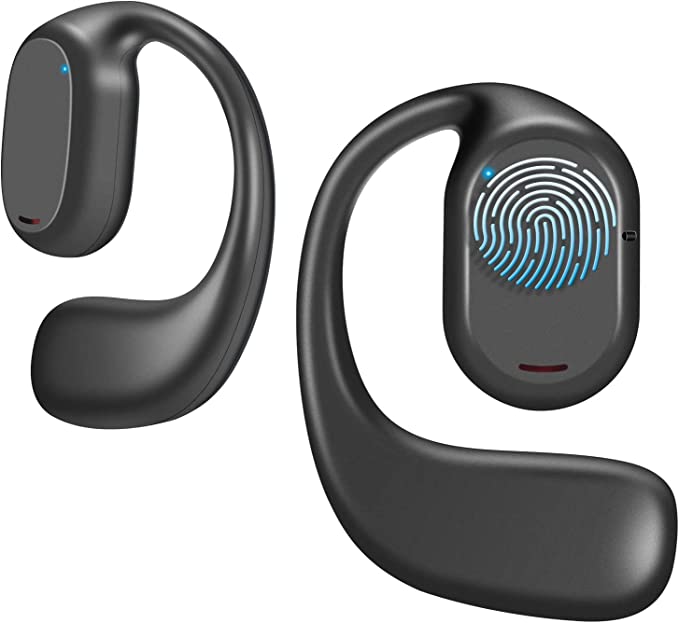Taanimo Earbuds Exposed: A Deep Dive into "Bone Conduction" Hype and Bluetooth Blues
Update on May 29, 2025, 1:26 p.m.
There’s a peculiar thrill in stumbling upon it: the impossibly feature-rich gadget at an unbelievably low price. It whispers promises of cutting-edge technology democratized, of high-end experiences made accessible. We see a long list of acronyms and buzzwords – “Bone Conduction! Bluetooth 5.3! Waterproof!” – and a price tag that barely dents the wallet. Hope, that tenacious human trait, nudges us forward. Could this be the one? The Taanimo Wireless Earbuds, with their impressively lengthy title “Taanimo Wireless Earbuds, with Earhooks Mini Bone Conduction Headphones Waterproof Bluetooth 5.3 Open Ear Earbuds Cycling Earpiece Noise Canceling Headset Sports Earphones,” certainly sing this siren song. They appear to be the David to the Goliaths of the audio world, a plucky upstart ready to deliver. But as we peel back the layers of marketing gloss, a far more cautionary tale emerges, one that serves as a stark reminder for every digital-age consumer. This isn’t just a product review; it’s an exploration of expectation versus reality in the often-murky waters of online marketplaces.

Deconstructing the Dream: A Feature-by-Feature Autopsy
The Taanimo earbuds arrive on the scene (at least, on their product page) boasting a suite of features that would make even premium brands take notice. Let’s dissect these claims, holding them up to the twin lights of scientific understanding and the reported user experience, to see if they crumble to dust or shine with unexpected brilliance.
The “Open-Ear” Promise: A Breath of Fresh Air or Just Hot Air?
The concept of open-ear audio is genuinely appealing, particularly for the active and aware. Unlike traditional earbuds that seal off the ear canal, creating an isolated soundscape, open-ear designs allow ambient sounds to filter in. Imagine cycling through city streets, a podcast playing, yet still clearly hearing the tell-tale whir of an approaching electric vehicle, or a jogger’s friendly “on your left!” This heightened situational awareness is not just a convenience; it’s a significant safety feature. The technology isn’t new; open-ear designs have roots in professional communication headsets where environmental awareness is paramount, and they’ve gradually found their way into consumer audio, championed for their comfort during extended wear and their ability to keep users connected to their surroundings.
Taanimo claims to offer this with its “Open Ear Earbuds Cycling Earpiece.” The earhook design suggests an attempt to secure the earbuds during vigorous activity, a common requirement for sports-focused audio gear. User feedback on this aspect is somewhat mixed, as is often the case with fit, which is highly individual. A user named Enjuli, who has tragus and daith piercings, found them “awesome” and comfortable, a sentiment echoed by Kelebell who appreciated not having earbuds jammed into their ears. This suggests that for some, the physical design does avoid the intrusive feeling of in-ear monitors.
However, the audio aspect of the open-ear experience with the Taanimo buds is less clearly praised and becomes entangled with other, more problematic claims. True open-ear audio quality often involves a delicate balance – delivering clear sound to the user without excessive sound leakage to disturb others, and without completely sacrificing audio fidelity due to the lack of a seal. The provided data doesn’t offer enough nuanced feedback on this specific balance for the Taanimo product, as more glaring issues tend to dominate the user commentary. The question remains whether Taanimo achieves a thoughtful open-ear audio delivery or if “open-ear” is simply a consequence of a design that doesn’t (or can’t) create a seal, irrespective of acoustic engineering.

“Mini Bone Conduction”: A Technological Marvel or Marketing Mumbo-Jumbo?
Now we venture into territory where the Taanimo claims become particularly audacious: “Mini Bone Conduction Headphones.” True bone conduction is a remarkable feat of audio engineering. Picture Ludwig van Beethoven, his hearing failing, biting down on his conducting baton pressed against his piano to “hear” the vibrations. That, in essence, is the principle. Instead of sound waves traveling through the air into the ear canal to vibrate the eardrum, bone conduction transducers send micro-vibrations directly through the bones of the skull (typically the cheekbones) to the cochlea, the inner ear’s sense organ. This bypasses the outer and middle ear entirely, making it invaluable for individuals with certain types of hearing loss and popular in sports where ear canals need to remain unobstructed for safety or to allow for earplugs. High-quality bone conduction can offer a unique, almost intimate listening experience.
The Taanimo earbuds, however, seem to offer a rather different experience, if user Nathan D Elam’s verified purchase review is anything to go by: “These bone conduction earbuds are not bone conduction at all.” This is a damning assessment. It suggests that the “Mini Bone Conduction” label might be a case of what one might call “aspirational marketing” or, less charitably, outright deception.
Many budget products claiming “bone conduction” actually employ small, conventional speakers positioned near the ear or cheekbone. These create localized sound that might vibrate the outer ear or surrounding bone structure incidentally, but this is a far cry from the dedicated electromechanical transducers that define true bone conduction. The latter must efficiently convert electrical signals into precise mechanical vibrations delivered to the bone, a process requiring sophisticated engineering and quality components. If the Taanimo earbuds are merely directing sound from tiny speakers towards the ear area, the “bone conduction” claim is misleading at best. This distinction is crucial: true bone conduction has a characteristic sound signature (often lighter on deep bass due to the transmission method but excellent for vocal clarity) and a distinct tactile sensation of vibration. The absence of these, or a sound that clearly emanates into the surrounding air rather than through the bone, would expose the claim. The user feedback strongly points towards the Taanimo product falling into the “pretender” category.

Bluetooth 5.3: The Pinnacle of Connection, or a Tangled Mess?
In the realm of wireless audio, the Bluetooth version number is often touted as a key indicator of performance. Bluetooth 5.3, a relatively recent iteration of the standard, theoretically brings several enhancements over its predecessors. These can include improved connection stability, greater power efficiency (potentially leading to longer battery life), lower latency (reduced delay between audio source and playback, crucial for video and gaming), and support for features like LE Audio (Low Energy Audio) which promises new capabilities and efficiencies, though device and peripheral support for LE Audio is still rolling out. When a product boasts Bluetooth 5.3, the expectation is for a robust, reliable wireless experience.
The Taanimo earbuds proudly list “Bluetooth 5.3” in their title. Yet, the user experience painted in the reviews is one of profound disappointment. Maiko, another verified purchaser, describes an “awful range,” stating, “I can’t have my phone in my pocket or the earbuds break in and out of connection. Also it slows the music down like nothing I’ve ever experienced before.” This report of unstable connectivity, limited range, and bizarre audio artifacts like slowdowns is antithetical to the promise of Bluetooth 5.3.
This chasm between claimed specification and actual performance highlights a critical point often lost on consumers: the Bluetooth version number is only one part of a complex equation. The quality of the Bluetooth chip itself, the design and placement of the internal antenna, the firmware optimizing the connection, and even the paired device can all dramatically impact real-world performance. A product can technically incorporate a Bluetooth 5.3 capable chip, but if these other elements are poorly implemented – perhaps due to cost-cutting measures – the user experience can be worse than that of an older but well-engineered Bluetooth 4.x device.
Adding to the confusion, the “Product information” section for the Taanimo earbuds bizarrely lists “Connectivity Technology: Wired.” For a product so vociferously marketed as “Wireless Earbuds” with “Bluetooth 5.3,” this is either a spectacularly careless error in the listing or a sign of profound internal confusion about the product itself. It’s a comically tragic footnote that underscores the overall unreliability of the information presented.
“Waterproof” Warriors or Fair-Weather Friends? The IP Rating Illusion
For any electronic device intended for active use, especially sports, some level of protection against moisture is essential. Sweat, rain, and accidental splashes are common occupational hazards. The Taanimo earbuds’ title boldly proclaims them “Waterproof.” This single word conjures images of care-free use in downpours, perhaps even a rinse under the tap.
However, the reality, as revealed in the customer Q&A, is far more modest. When directly asked “Are the headphones Waterproof? If so to what depth?”, user Skip Deere unequivocally replied, “No, just water resistant.” This sentiment was echoed by a reviewer, “Amazon Customer,” who stated, “Not waterproof as stated in description.” This discrepancy is not trivial; it’s the difference between a product that can survive a swim and one that might (or might not) survive a sweaty workout.
The term “waterproof” is often used loosely in marketing, but in consumer electronics, it’s more precisely defined by Ingress Protection (IP) ratings, standardized by the International Electrotechnical Commission (IEC). An IP rating like IPX7, for instance, means the device can be submerged in up to 1 meter of water for 30 minutes. A rating like IPX4, on the other hand, signifies protection against splashing water from any direction – suitable for sweat and light rain, but definitely not submersion.
The Taanimo product listing provides no specific IP rating. The term “water-resistant,” as suggested by users, implies a much lower level of protection than “waterproof.” This misleading terminology is a significant disservice to consumers. An athlete purchasing these based on the “waterproof” claim might find their investment short-lived after a particularly intense, sweat-drenched session or an unexpected cloudburst. Accurate IP ratings are vital for setting correct expectations and ensuring product longevity under stated use conditions. Without it, “waterproof” is just a word, easily washed away by the first inconvenient truth.

The Daily Grind: Controls, Comfort, and the Ticking Clock of Battery Life
Beyond the headline features, the everyday usability of earbuds hinges on aspects like comfort, control interface, and battery endurance. Here too, the Taanimo story is one of frustration.
The earhook design, as mentioned, did provide comfort for some users with piercings. However, general ergonomic success is not guaranteed by one design element. The crucial interface with any wireless earbud is its controls. The Taanimo earbuds feature a multifunction button, a common approach. Yet, its implementation appears flawed. Nathan D Elam reported the button was “so sensitive it paused and played my music 18 times over a 3 mile walk.” Another user, “Amazon Customer,” noted that “them touching the head causes stoppages and unwanted voice activation.” Such hyper-sensitivity transforms a convenience feature into a constant source of irritation, disrupting workouts and listening sessions. It points to either poor sensor calibration or a lack of thoughtful design in button placement and required actuation force.
Then there’s the lifeblood of any portable electronic device: battery life. The Q&A section, via user “Two thumbs,” suggests a meager “Between 2-2.5 hrs” on a full charge. While a charging case is mentioned (“I always had the case with me so I could charge them in fifthteen minutes” – though this 15-minute charge claim isn’t substantiated elsewhere in the provided data and seems optimistic for a full recharge), a 2-2.5 hour standalone runtime is exceptionally short by modern standards, barely sufficient for a moderate workout or a short commute, let alone extended use. To compound this, user Courtney reported a more critical failure: “The battery continues to drain when it’s in the holder.” This indicates a potential flaw in the charging case’s circuitry or the earbuds’ power management when docked, rendering even the case’s recharging capability unreliable. For a device intended to be portable and ready for action, such poor battery performance and charging anomalies are significant drawbacks.
The Phantom of the Opera: When Earbuds Share Reviews with Gun Holsters
Perhaps the most bizarre and alarming aspect of the Taanimo earbud saga lies buried in the Q&A section, a detail that threatens to invalidate much of the product’s already shaky credibility. A user asked: “Are these headphones or a gun holster? Most of the reviews I’ve seen are for a gun holster not earbuds.” The candid reply from Stacey on May 17, 2023, was: “It seems the seller recycled an old listing to use as earbuds.”
This. Changes. Everything.
If true, this practice, sometimes known as “Amazon listing hijacking” or “review merging,” is a deceptive tactic where a seller repurposes an old product listing (often one with a history of positive reviews for an entirely different item) for a new, unrelated product. The aim is to instantly grant the new product an artificial history of positive feedback, misleading potential buyers who rely on review scores and counts as indicators of quality and trustworthiness.
The implications are catastrophic for the consumer. Any aggregated star rating becomes meaningless. Individual reviews, unless explicitly stating they refer to the earbuds and dated after the (alleged) repurposing, are suspect. That 3.1-star rating from 36 reviews? It could be an amalgam of feedback for earbuds, gun holsters, or who-knows-what-else. This single Q&A exchange casts a deep shadow of doubt over the entire product page. It transforms the act of reading reviews from a helpful due diligence step into a confusing, potentially misleading trawl through irrelevant or manipulated information. It’s a stark illustration of the vulnerabilities within online marketplace ecosystems and the lengths to which some sellers might go to game the system. The “gun holster” comment isn’t just a curious anomaly; it’s a potential smoking gun pointing to a fundamentally compromised product presentation.
Beyond Taanimo: A Consumer’s Survival Guide in the Tech Jungle
The Taanimo earbud case, with its tangled web of questionable claims, negative user experiences, and potentially deceptive listing practices, serves as a potent, if unfortunate, lesson. It underscores the need for heightened vigilance when navigating the increasingly crowded and often opaque market of budget electronics. So, how can a discerning consumer arm themselves?
- The “Too Good To Be True” Heuristic: This age-old wisdom remains remarkably relevant. If a product boasts a litany of high-end features (true bone conduction, latest Bluetooth, waterproofing) at a rock-bottom price, maintain a healthy skepticism. Genuine innovation costs money in research, development, quality components, and manufacturing.
- Scrutinize the Extremes (and the In-Betweens): Don’t just look at the average star rating. Dive into the 5-star and 1-star reviews. Are the positive reviews vague and generic, or detailed and specific? Do the negative reviews highlight consistent problems? In Taanimo’s case, the detailed negative reviews about specific earbud failings are far more informative than any potentially irrelevant high scores.
- Read the Q&A Section Thoroughly: As demonstrated, this section can sometimes unearth critical information or red flags not immediately apparent in the main description or reviews.
- Look for Independent Reviews: If a product is legitimate and performing well, it’s likely to be reviewed by independent tech websites, YouTubers, or magazines. A complete absence of such third-party validation for a product claiming significant features can be a warning sign.
- Understand Key Technologies (At Least Basically): Knowing the fundamental difference between “waterproof” and “water-resistant,” or understanding that “bone conduction” is a specific mechanism, not just any sound near your head, empowers you to see through marketing jargon.
- Beware of Listing Anomalies: Contradictory information within the listing itself (like “Wired” for wireless earbuds), or reviews that seem to describe a different product, are major red flags.
- Trust Your Gut: If something feels off about a product listing, or if the claims seem wildly inflated, it’s often wise to err on the side of caution.
Conclusion: The Echo of Empty Promises
The Taanimo Wireless Earbuds, as depicted in the provided information, appear to be less a technological marvel and more a masterclass in over-promise and under-delivery. From the disputed “bone conduction” and “waterproof” assertions to the problematic Bluetooth connectivity and the deeply concerning “gun holster” review anomaly, the product seems plagued by issues that extend from core functionality to the very integrity of its market presentation.
While the allure of an affordable, feature-rich device is understandable, the Taanimo case study highlights the potential pitfalls lurking in the digital marketplace. It underscores that proclaimed features are meaningless if not implemented correctly or if the claims themselves are misleading. The true value of a product lies not in a lengthy list of buzzwords on a webpage, but in its reliable performance, its honest representation, and its ability to genuinely enhance the user’s experience.
Ultimately, the story of the Taanimo earbuds is a somber echo of empty promises. It serves as a compelling reminder that in the world of consumer technology, critical thinking, thorough research, and a healthy dose of skepticism are a buyer’s most valuable assets. The goal isn’t just to find a cheap gadget; it’s to find a good one, and that often requires looking beyond the surface-level shine to see what truly lies beneath.

